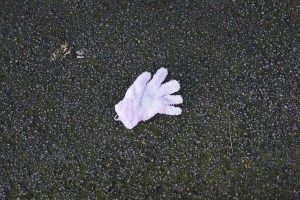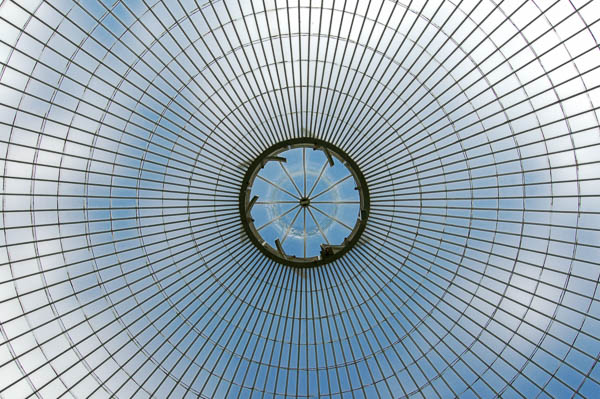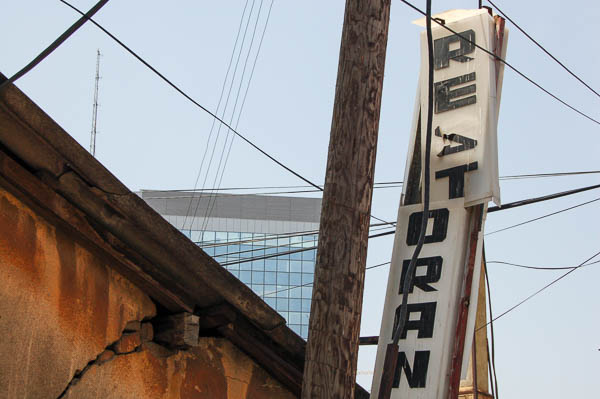Make a list of some aspects of your personality that make you unique. Start taking a few pictures that could begin to express this. How could you develop this into a body of work?
– IaP Coursebook, p.66
Well first, there’s all the physical stuff that could be used to identify me in a variety of – not particularly promising – situations: my fingerprints, my teeth or my DNA. Then there is my retina, which could be used at some point to get me into secure buildings. All of these could be turned into pictures, but they wouldn’t be very indicative of my personality or my perspective on things, what I think or indeed who I think I am.
My own DNA is a unique mix of my mother’s and my father’s chromosomes; my personality – despite my mother’s (often exasperated) statement that I was ‘just like my father’ – is a mix of the two of them in much the same way that – when I look at photographs of them, or myself in the mirror – the lower half of my face is my father’s while my eyes, I think, hidden like hers behind glasses, are my mother’s.
Both the two proceeding paragraphs use the phrase ‘I think’ quite a lot too. I think that’s characteristic of me and my personality. Here are some other ways I might characterise myself:
- I’m inquisitive. Or nosy. Or not afraid to stare.
- I’m interested in things
- I prefer humour to concern.
- I tend to approach things from the outside, even though in many ways, socially, I’m an insider.
- I’m fairly introverted but – like many introverts – I spend a lot of my time performing.
- I prefer one-to-one meetings where the contradictory aspects of myself are less likely to be exposed
- I like to put things (and sometimes people) together; I’m good at association.
- I have traveled quite a lot.
- I don’t mind eating alone in restaurants.
- I can draw on a wide range of cultural references.
- I am (and can be overly) analytical.
And I have read enough about psychology to know that any process of self-analysis can include a lot of transferred hostility. There could be elements of this in my reactions to this course…
I’ll look more closely now at one of those characteristics – ‘I have traveled quite a lot’ – and see where it leads. You may be able to fit others into my argument as you read…
I’m sure I was not the only person who – opening the curtains after waking up from their first night in a room on the north-west corner of the Hotel Rossiya in Moscow – thought ‘Wow!’ and took a quick snap of St Basil’s Cathedral. Quite a few of them would then have taken a more considered shot later, having worked out how to open the window (it was a sixties’ building, not a totally sealed and air-conditioned box) and got a desktop tripod out of their luggage to take a night shot. Lots of them would have gone on to do a matched night/day pair.
- fig.1
- fig.2
So there is nothing unique about either of these pictures (in fact they’re a visual cliché, signifying ‘Moscow’ as lazily as the Eiffel Tower does ‘Paris’ or Big Ben ‘London’). The rooms on that side of the hotel offered (past tense because the hotel was demolished more than ten years ago now) a good enough vantage point on Red Square for it to have been hired by people looking for a postcard image or similar. I’m sure there are published professional shots which don’t look too different to mine.
But just as most people would only have taken one, quick shot, even fewer people would have stayed at the Rossiya on a number of occasions and have taken pictures of other views from the windows of other rooms. Like this picture from opposite corner of the building, looking south-east down the river towards one of seven great tower blocks, built in Moscow in the late forties, by German POWs:
This is still a cliché, but to a much lesser degree. Put it with the other two and it begins to become an – admittedly clichéd – response to a place.
I took (made?) these pictures a long time ago and, while none of them has any pretension to art, they aren’t bad as travelogue. They also are great as an aide-memoire. Looking at the two of St Basil’s, I can remember setting the camera up on the tiny tripod and tripping the timer so there wouldn’t wobble as I pressed the shutter; and I can remember the cold of the outside and the tiny flurries of light snow billowing about outside and the great window held back by the curtain. Looking at it, I can almost remember what it felt like to be me, 14 years ago now.
Back in the present, I still look out of windows, and I still take pictures of what I see there. Indeed, there have been periods of time (usually when I’ve been travelling) when I have taken a photograph every day, of what I see when I first open the curtains. Sometimes I’m reflected back at myself, either partially or clearly as if in a mirror. The repetition can be traced back to people whose work I have come across and liked, like Nigel Shafran; embracing the reflections in the windows I look through (and not cursing, and trying to eradicate them by varying the angle or using a circular polariser) after reading Tod Hido’s ‘On landscapes, Interiors and the nude’ (aperture, 2014). The space I occupy will leave traces on an image what it is that I’m looking at. In cinematic terms, field and reverse collapse into a single, complex plane.
- fig.5
- fig.6
This pair of window pictures have repeating compositional elements: upper left – a rorschach-type blob; a diagonal space running from top left to bottom right; the hard vertical of the reflected banisters in on and the tree’s trunk in the other. And then, fig. 5 (looking out of Tate Modern) makes me think of of Saul Leiter, reflecting back some of my cultural life; and fig. 6 (from my living room window in Walthamstow) adds the narrative human element of the two men and the child in the street.
I have no idea who they are or what they are talking about, as they stand underneath the nicely lit autumnal tree (the reason I picked up my camera and walked over to the window that afternoon) but they are the why I carried on looking and why I have done something with the picture rather than let it help form another stratum of digital silt on a hard disc in my attic. Not quite a punctum perhaps, but certainly something to hold my attention, make me wonder and make me think. Hopefully they hold you too, as you try to identify what’s going on.
Three things come together in this sort of photograph: I occupy a space, in time; the point at which I make the picture is determined by the things I am interested in; and then there is an element of randomness, since I cannot control what is going on outside of ‘me’ but can pluck a moment from the chaos that swirls around me.
Physically, I always occupy a piece of three-dimensional space that is mine and – for that instant – mine alone. If I lift my camera to my eye and take a picture of what it is in front of me, I will have a picture that is unique to me and my viewpoint at the moment I took it. Talking about his early-70s work, American Surfaces Stephen Shore has described his process at the time as:
“At random moments, whenever I thought of it, I would take what we would call today a screenshot of my field of vision. What was I looking at? What was the experience of looking, like? And I used that as a reference of how to make a picture, rather than the more conventional language about how a picture is supposed to be constructed.”
– https://www.moma.org/audio/playlist/45/717 (accessed 29/1/18)
I used this approach for the diary sequences I made during part 3 of Context and Narrative. It is quite easy to maintain this when you have a finite amount of time in a place that is unfamiliar. It is harder to apply it to your everyday surroundings. This is something I am beginning to work with, creating bodies of work from the normal stuff of my life rather than the bits that are in some way exceptional. I have spent a lot of time recently looking back through my archive. The addition of elapsed time helps with this. Ostensibly dull pictures from ten years ago seem fascinating as things change and what is depicted is no more. The pictures taken in London become as distant as those taken somewhere abroad…
- fig.1 – walthamstow
- fig.2 – stratford
- fig.3 – boston ma
Over time, my photographs become a running commentary on where I have found myself, and what I have seen there. They also contain traces of more than fifty years of cultural input. Put together, it all begin to indicate something of who I am.
Any uniqueness of approach cannot be said to come from the individual pictures, rather it only becomes possible when you put those pictures together into sequences of increasing length and complexity. You could compare the pictures to words (we all use the same lingusistic building-blocks in order to communicate, even if some people do still manage to create neologisms) and sequences to sentences. At this larger level there is still scope for originality, for the unique, even when the individual elements have been worn shiny through use. I’ll close this post with eight words, two of which are repetitions, one of which is repeated twice; all of them consist of a single syllable. Any English speaker will use those words every day; the sentence is nonetheless unique, and – providing the bit of the culture it comes from is a thing that we share – immediately identifiable:
‘…and yes I said yes I will Yes.’ – James Joyce; Ullysses (1923)



















